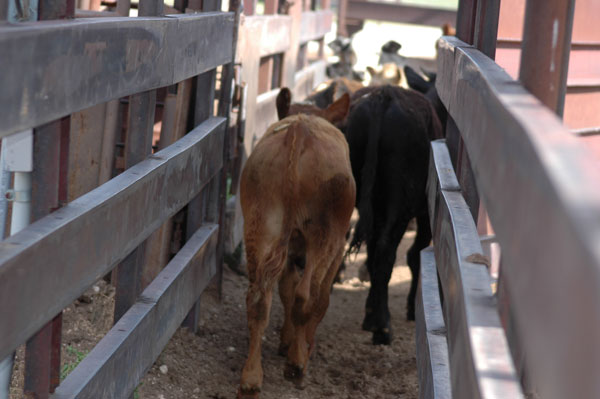“The next two weeks are likely to be the most critical in determining the cattle market situation for the remainder of the year,” says Derrell Peel, Extension livestock marketing specialist at Oklahoma State University.
October 16, 2015

“There are encouraging signs that fed and feeder cattle markets have turned the corner on the massive slide in prices in recent weeks,” says Derrell Peel, Extension livestock marketing specialist at Oklahoma State University, in his weekly market comments. “Cash fed and feeder cattle prices rallied late last week and Live and Feeder futures contract prices also rallied sharply last week.
“More importantly, two weeks of higher slaughter, especially steer slaughter, and a slight decrease in steer and heifer carcass weights in the latest data, may be signs that the worst is behind us.”
There were a variety of factors at play in the recent price drubbing, but the much-discussed backlog of ultra-heavy cattle is generally accepted as the primary contributor.
“What happened, especially for fed cattle markets, was a necessary correction to provide the market signals to fix a problem that developed over several months due to a lack of proper market signals,” Peel explains. “Feedlots have been pushing carcass weights for months, abetted by packers, since both had individual as well as market incentives to offset lack of cattle numbers with additional carcass weight. However, there are both biological and market limits to how far weights can be pushed before hitting a relatively abrupt wall.”

70 photos show ranchers hard at work on the farm
Readers have submitted photos of hard-working ranchers caring for their livestock and being stewards of the land. See reader favorite photos here.
Peel points out customary market signals were either absent or showed up too late. For instance, reported discounts for heavyweight carcasses never increased, he says. Discounts for Yield Grade 4-5 cattle never appeared until September and only at modest levels.
Analysts with USDA’s Economic Research Service (ERS) point out in the monthly Livestock, Dairy and Poultry Outlook issued Friday that banner pasture and forage conditions this year helped encourage heavier feedlot placement weights.
“The next two weeks are likely to be the most critical in determining the cattle market situation for the remainder of the year,” Peel says. “If the heavy cattle are thoroughly cleaned up, there is good potential for a significant rally and fundamentally stronger cattle markets for the rest of the year. However, the quickest way to make sure a rally never materializes is to start waiting for it too soon. Certainly, it will take some time for the additional beef tonnage to work through wholesale and retail markets but it is encouraging that beef movement appears to be good.”
Peel believes the price slide offers a broader lesson.
“The dramatic increase in fed carcass weights this year is testament to cattle genetics and production technologies that allow cattle to grow to weights unimaginable just a short time ago,” Peel explains. “This, combined with relatively low feed cost, increasingly suggests that we have the ability push both total production and product size beyond market limits.”
Peel says it’s clear that we can continue to make steaks bigger, but it is not at all clear that we can sell them profitably. “At the very least, there will have to be changes in the way products are marketed…There may be a Jurassic Park lesson for the beef industry in all of this: just because you can, doesn’t mean you should. It is critical that we recognize and focus on what we must produce to meet market demand and not just on what we can produce…no matter how efficiently.”
You might also like:
Is preconditioning still a no-brainer?
Burke Teichert shares the secrets of a profitable cow
Record carcass weights strain market weakness
About the Author(s)
You May Also Like





